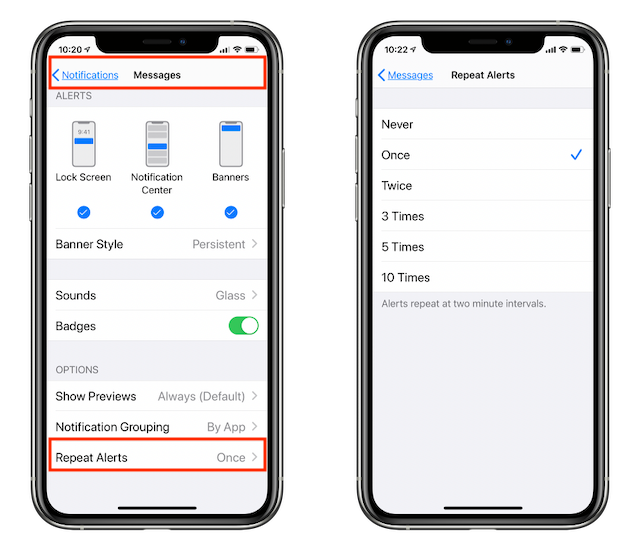We wrap up our month of iOS Settings articles with this one about Sounds & Haptics. Who know there were so many settings just for Sounds & Haptics?
The iPhone uses sounds and “haptics” (those little kicks and bumps that make it feel as if you are manipulating physical objects and not just pixels on a screen) to provide feedback as you use your iPhone. You get lots of control over how sounds and haptics work on your iPhone; here are four important Sounds & Haptics settings you should know about.
Turn off “Change with Buttons”
It’s a drag to miss a phone call. It’s even more of a drag when your iPhone is right there, on the desk, or maybe in your pocket, and you miss the phone call anyway. You’d swear it didn’t ring, or maybe you just didn’t hear it. Most of the time, the problem is the ring sound was too soft.
(Maybe the physical ring switch was off. That happens. You can set a Reminder to turn the ring switch back on. That’s what I do– I have a Reminder that says “Turn on the ringer” at 5:45 pm every day, when I’m done with work.)
How does this happen? How does your ring’s volume level keep changing? Most of the time, it’s because you pressed the “volume down” button on the side of the phone while watching a video or listening to music without recognizing that you were lowering the ringer’s volume also. (You might also have pressed the volume down button by mistake, maybe while trying to take a screen shot or turning the iPhone off.)
So how do we solve this problem? We solve this problem by disconnecting ringer volume from listening-to-music-and-watching-videos volume. Go to Settings, then Sounds & Haptics and in the Ringer and Alerts section, turn OFF Change with Buttons. (That’s for iPhone 7 and later; earlier models will don’t have haptics so for those iPhones go to Settings and then Sounds.) Set the ringer’s volume to whatever you like, knowing that it will always be that loud. As you can see from the fine print, “The volume of the ringer and alerts will not be affected by the volume buttons.” Every other sound will be affected by the volume buttons, but not the ringer and alerts.
Enable system haptics and feedback
Go to Settings, then Sounds & Haptics, and scroll to the bottom. You’ll see “System Haptics.” That switch should be on. You can feel the difference that this makes very easily: switch it on, then toggle the switches for Keyboard Clicks and Lock Sound (right above the System Haptics switch). With System Haptics on, toggling a switch feels like you’re doing something real, and you can tell, by feel, that you changed the state of the switch. With System Haptics off, there’s no touch feedback, so you have to look more closely to be sure you did what you were trying to do. I think you’ll agree: it’s better with System Haptics on.
Experiment with Audio/Visual options in the Accessibility settings
If you go to Settings, then Accessibility, then Audio/Visual, you’ll find an option for b. Turn that on and your iPhone’s camera flash will strobe when a phone call comes in. After you turn on LED Flash for Alerts a new option appears: Flash on Silent. These settings are pretty extreme and you may want to turn them back off after you receive a call or two. But if you don’t hear so well, having a flashing strobe to alert you to phone calls is the perfect thing. So try it out and see what you think. It might not be right for you today but maybe it’s right for a friend or a relative. And maybe it will be right for you down the road.
Turn on 3D Touch
3D Touch gives you various options when you press hard on various buttons and icons on the iPhone. I don’t know why this one is hidden away in the Accessibility section of the Settings, but it is: Settings, Accessibility, Touch, 3D & Haptic Touch. Anyway, go in there and turn it on.
Once it’s on, you’ll get options for 3D Touch’s sensitivity and for how long you have to hold down to get 3D Touch to kick in. Below that is a picture of a poppy, which you can tap and press on to see how the different settings feel to you.

Make it go “ding” twice– or more!
Go to Settings, then Notifications. Here, I’ve told Messages to repeat the “ding” one time (after a two-minute delay). Maybe I’ll hear it the second time.

That’s it– try these settings and see what a difference they make.
Copyright 2008-2024 Christian Boyce. All rights reserved.Did this article help you?
Maybe you'd like to contribute to theChristian Boyce coffee fund.

Want some some quick Mac how-tos?
Visit me at One-Minute Macman.
Looking for in-depth tutorials?
See my christianboyce.com website!



